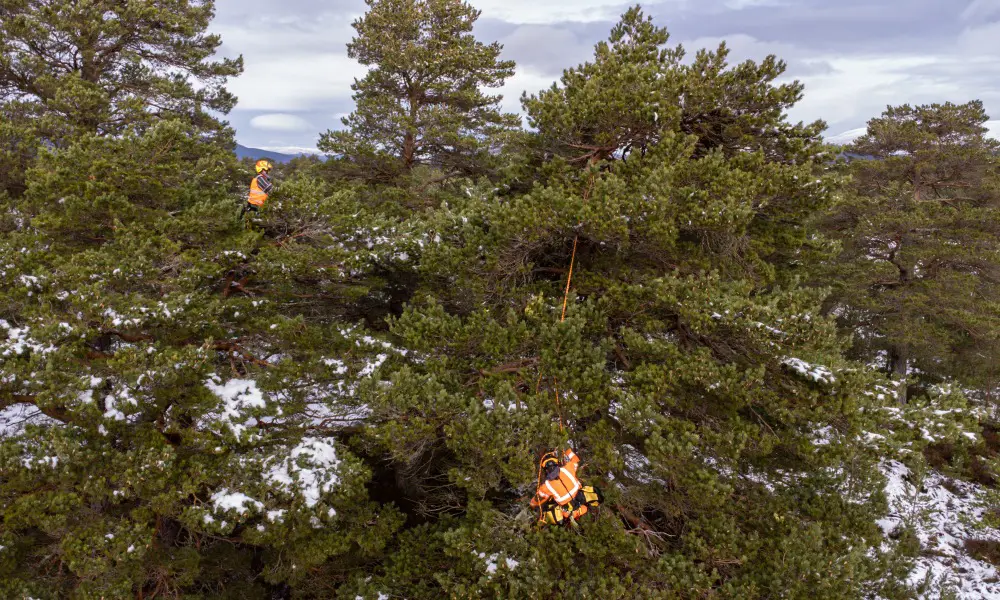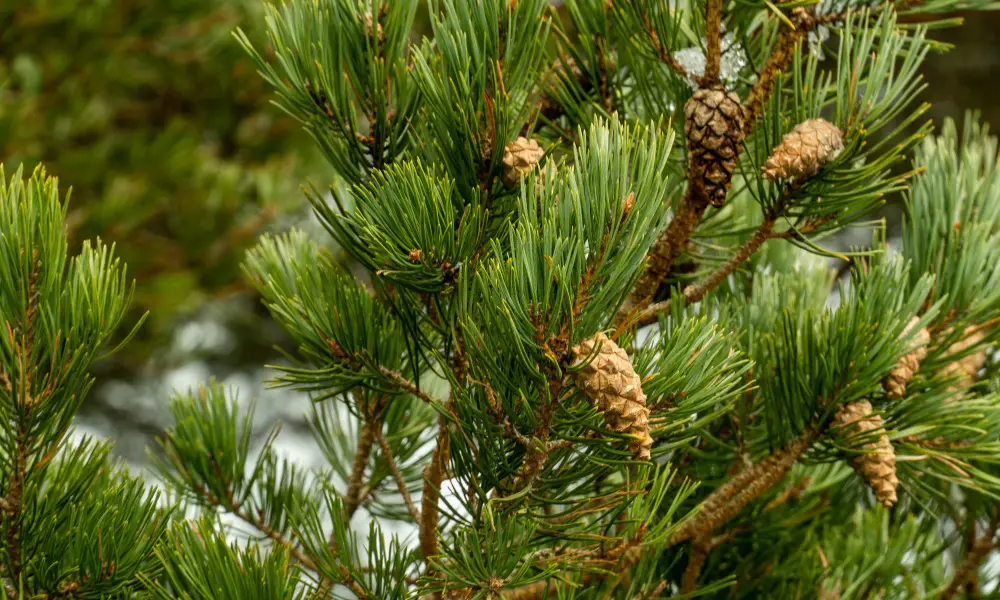Annual Scots pine collection

Scots pine is our national tree and was once used to make ship masts. Its timber is strong and easy to work with making it a popular building product even today. It’s also a key pioneer species in our iconic Caledonian pine woods.
Our nursery in Newton grows almost 2 million Scots pine a year. A portion of these saplings are used for native woodland restoration, while the rest is planted for timber.
To meet our planting goals, we need to first make sure we have seeds. For this we look towards specialised contractors for help.
A Scots pine will produce cones most years. We need to make sure we get to the cones before they open or drop to the ground and lose their seeds.
These trees also grow up to 36 meters in height and lose their lower branches as they age. Flowers form at the end of growing tips meaning the cones are often at the top of the trees.
This means our contractors need to get into the trees to collect the seeds.
We then extract the seeds using machines. For this, they are sent down south to the seed extractory at Alice Holt Research Station where they are processed before being sent back north and planted in our nursery. The seedlings will then be planted and kept at the nursery for up to three years till the saplings are big enough to be planted in forests.
On average we produce around 7 million seedlings a year with hopes of doubling our capacity in the next two years by renovating our nursery.
Learn more about our plans for Newton

Caledonian pine wood
Already this year our contractors have collected 120 sacks of cones from the Cairngorms. This is important because we need to collect and plant the seeds from the same area to help manage tree diseases such as Dothistroma needle blight which can severely impact the pines.
The 10,000-hectare large-scale habitat restoration project across the Cairngorms is focusing on peatland and Caledonian pine restoration.
Much of this forest was removed between 1915 and 1950 for the war effort. Today we are working on restoring the native woodland by reducing deer numbers and using low impact silviculture to bring this area of land back to its original glory.
There are plenty of walking trails through the native pine wood around Glenmore where you can experience this amazing habitat in person and learn more about it. Or see below for some other walking trails through stunning Scots pine.
Where to find Scots pine

Glen Affric
A rushing river, the gateway to Glen Affric.

Devilla
Watch for red squirrels scurrying through the pine.
 Drummond Hill
Drummond Hill
Views of Loch Tay and Glen Lyon from above Kenmore.